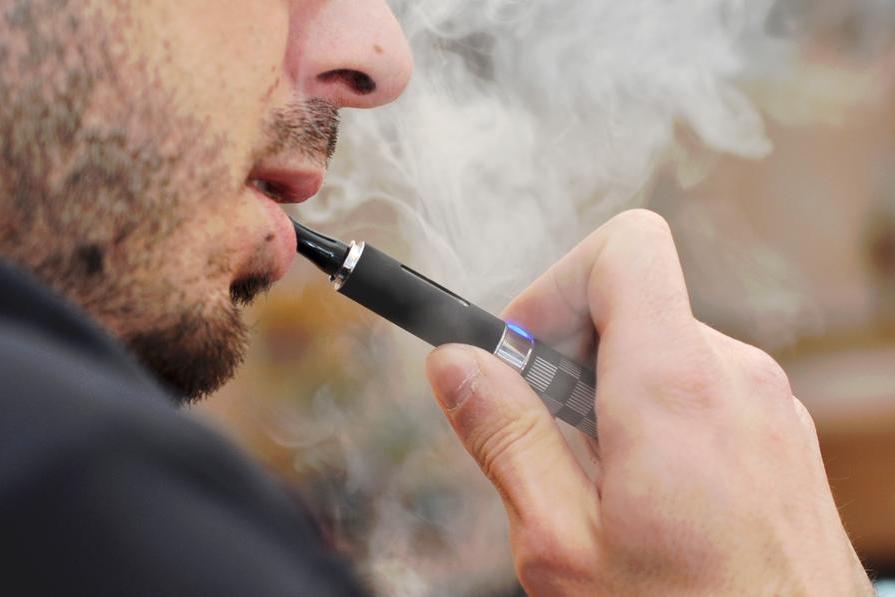Bengaluru, Aug 1 (IANS) On the World Lung Cancer Day health experts have expressed concern over the rising trend of lung cancer among women and non-smokers in the IT capital of the country, Bengaluru.
Dr. Vivek Anand Padegal, Director - Pulmonology, Fortis Hospital, Bannerghatta Road, Bengaluru stated that lung cancer is experiencing a surge among women in the state capital. Based on a recent study conducted by the Indian Cancer Society, the incidence of lung cancer in female residents of Bengaluru has escalated by 20 per cent over the past five years.
This concerning pattern is particularly alarming because lung cancer stands as one of the primary causes of cancer-related fatalities among women in India. Various factors seem to contribute to this growing issue. One significant factor is the increasing number of women who have taken up smoking. Since smoking is the leading cause of lung cancer, the rise in the number of female smokers in Bengaluru in recent years has likely contributed to the surge in cases. Passive smoking in no-smokers could be contributing as well, said Dr Vivek Anand Padegal.
Another potential contributor is the escalating pollution levels in the city. Bengaluru's air quality, which is among the poorest in India, presents a known risk factor for lung cancer, potentially worsening the situation for women in the city, he says.
Dr Padegal further explained that the increasing incidence of lung cancer among the women in Bengaluru necessitates serious attention from a public health standpoint. "It is crucial for women to be informed about the risk factors associated with lung cancer and to take proactive measures to mitigate their risk. These actions encompass refraining from smoking, avoiding exposure to secondhand smoke, and minimizing contact with air pollution. By adopting such preventive measures, women can take steps towards safeguarding their health and well-being," he said.
Dr Niti Krishna Raizada, Senior Director Medical, Oncology and Hemato-Oncology, Fortis Hospitals, Bengaluru explained that lung cancer happens to be the most common cancer among men in India. However, there is a noticeable rise in the number of cases in women, and this increase is often unrelated to smoking, although second-hand smoking can still be a contributing factor.
"Another significant factor includes exposure to indoor smoke and outdoor pollution, both of which are on the rise in Bangalore. The number of lung cancer cases observed in our regular practice is definitely increasing. Additionally, we are seeing younger patients, particularly women. Among women, almost 50 per cent have a target or actionable mutation, leading us to administer newer types of therapies to them. For those not included in this subset, we explore the potential role of immunotherapy in their treatment," said Dr Raizada.
Dr. Lohith Reddy, Consultant, Radiation Oncology, HCG Cancer Hospital, Bengaluru said, "Bengaluru witnesses a rising trend of lung cancer cases among women and non-smokers. The city's pollution, occupational exposures, and lifestyle factors contribute to this concerning scenario.
Based on the Karnataka population-based cancer registry (PBCR), the incidence of lung cancer is 10 per cent in males among the annually diagnosed cancer patients and 2.3 per cent in females among the annually diagnosed cancer incidences, and the trend seems to be increasing, Dr. Reddy stated.
“It is vital to emphasize that lung cancer can affect anyone, irrespective of smoking history, and early detection is crucial in improving survival rates. In Bangalore, we urge the community to be vigilant about common symptoms, such as persistent cough, difficulty breathing, unexplained weight loss, blood in sputum and seek medical attention promptly. At HCG, we are committed to promoting lung cancer awareness, advocating for regular screenings and providing compassionate care to all patients and their families. Through increased collaboration, research, and access to cutting-edge treatments, we aim to bring hope to those battling lung cancer in the city of Bangalore," he states.
Dr. Deepak Koppaka, Consultant - Medical Oncology, CARE Hospitals, HITEC City, Hyderabad said that lung cancer is a significant health concern among women in India, ranking as the third most common cancer after breast and cervical cancer. In 2020 alone, there were an estimated 16,547 new cases of lung cancer in Indian women, leading to 10,606 tragic deaths. The statistics reveal the urgent need to address this growing issue in the country.
"Tobacco smoking remains the primary risk factor for lung cancer, exerting a significant impact on the increasing incidence among women. Additionally, exposure to secondhand smoke, radon, and air pollution also contribute to the rising cases. It is crucial to raise awareness about these risk factors and promote preventive measures to curb the disease's progression," he said.
"One alarming trend is the surge in adenocarcinoma, a type of lung cancer more prevalent in women than men. This rise is attributed to the growing popularity of filtered cigarettes, which are believed to be linked to an increased incidence of adenocarcinomas. This underscores the importance of addressing tobacco consumption, especially among women," stated Dr. Koppaka.
Examining the statistics further, the age-standardized incidence rate of lung cancer in Indian women is 2.7 per 1,00,000, while the age-standardized mortality rate is 1.7 per 1,00,000. Unfortunately, the 5-year survival rate for lung cancer in India stands at a mere 13 per cent, indicating the urgency of early detection and timely intervention, he stated.
Quitting smoking, avoiding secondhand smoke, and minimizing exposure to air pollution are crucial steps in reducing the risk of lung cancer, said Dr.Koppaka.
"Lung cancer poses a substantial threat to women in India, necessitating immediate action to reverse the increasing trend. Through comprehensive awareness campaigns, robust policies, and personal lifestyle changes, we can collectively strive to reduce the burden of lung cancer and improve the overall well-being of women in the country," he said.
--IANS
mka/dpb
Disclaimer: This story has not been edited by the Sakshi Post team and is auto-generated from syndicated feed.
Adblock test (Why?)
B’luru witnesses rising trend of lung cancer cases among women, non-smokers - Sakshi Post
Read More










Comments
Postmedia is committed to maintaining a lively but civil forum for discussion and encourage all readers to share their views on our articles. Comments may take up to an hour for moderation before appearing on the site. We ask you to keep your comments relevant and respectful. We have enabled email notifications—you will now receive an email if you receive a reply to your comment, there is an update to a comment thread you follow or if a user you follow comments. Visit our Community Guidelines for more information and details on how to adjust your email settings.
Join the Conversation